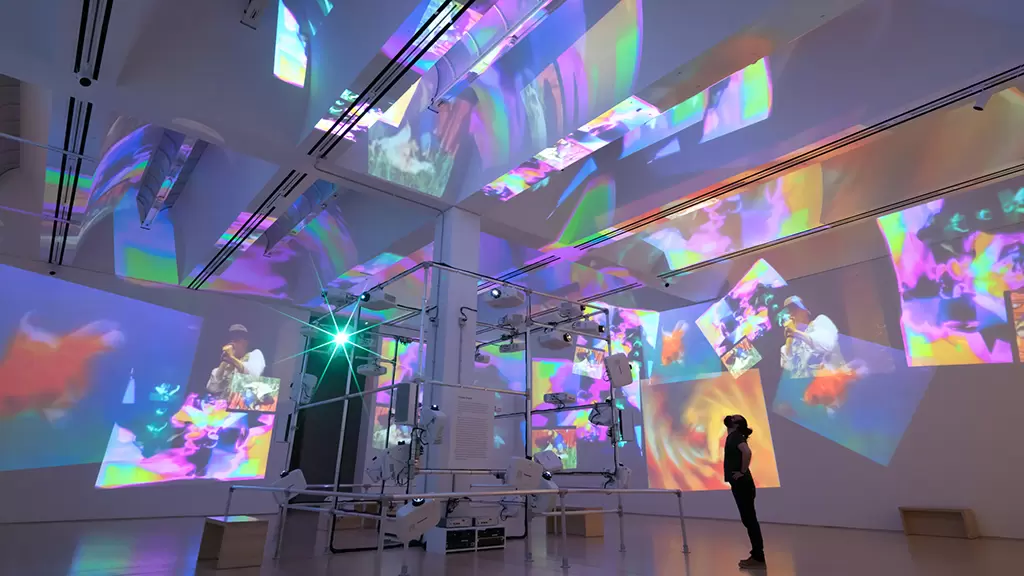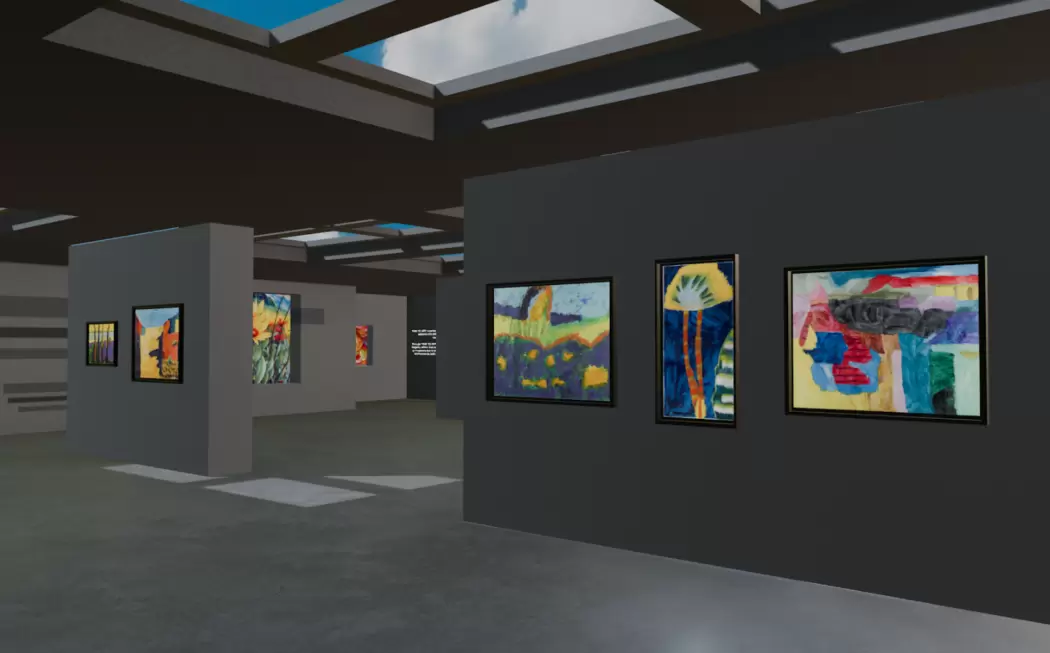Deep Dive in Digital Art and How to Start Your Journey
There are so many forms of art, and new ones emerge all the time, some are clear in what they are what they mean, some are more fluid, harder to put in boxes. In short, art is just like people, unique. As digital art is a term that is increasingly used and in broader context, with no fully clear definition or conflicting one, let’s do a deep dive in what is Digital Art and how you can start your journey creating it – in only a few clicks.


Before even diving into digital art, the term should be broken down, what do we mean when we are discussing Digital Art? What does it encompass?
Digital Art is still something hard to box here and there, fair and square. Most definitions agree that digital art is an art that has been created or presented using some sort of digital technology in the process. Other words used include computer art, and multimedia and sometimes get absorbed by the very exponential term new media art. From computer-generated, AI art, or simply something that has been drawn on an IPAD of the like, it can also include illustrations, videos, digital painting, and 3D animation.
Advantages of Digital Art
One of the major advantages of digital art is the intrinsic malleability of the work by the hands of the artist. Whereas an unsatisfactory canvas would have to be painted over or otherwise scraped, the power of the ‘undo’ button is huge! The ability to experiment, test, and challenge your practice while developing is something unparalleled in traditional visual art forms. With this freedom to experiment and grow, new frontiers can be explored and applied. For example, NFTs are not simply jpg for private collectors but are now tokens, which can be displayed for the public in the Metaverse for users to experience. The inherent ability to experiment, test and solve problems is what leads to these groundbreaking new developments in digital art production and experience.
From a user/ viewer experience perspective, digital art also offers the ability for the creator to more easily transport their work to galleries and museums, create multiples to share simultaneously with various exhibitors, and sell commercially. Pricey traditional shipping and logistics charges can be avoided in this realm of art with pieces able to be shared with an e-transfer nearly instantaneously, streamlining the entire exhibition run-up and experience.
Moreover, the artist has the power to manipulate scale and edition size. For example, digital photographers have the authority to create varying sizes of the same image in multiple limited editions all available for exhibition or purchase on the open market, allowing for flexibility and freedom of the artist over their own work. The instant shareability factor is certainly a huge advantage of digital art.
Digital art Do’s and Don’ts

Do’s
As with any medium and practice, it is always advisable for artists to engage with their fellow artist peers to familiarize themselves with the process, trends, and challenges to learn from when beginning to experiment and begin their own practice. The possibilities of digital art can be overwhelming by virtue of the sheer limitless possibilities in the realm of digital creation. Whereas painting may be limited to the physical limitations of the medium, the possibilities of digital manipulation, production, and reproduction can be endless. Fear not, however! Some key steps and tools to get familiar with the practice and creating digital art.
- You will need the right tools.
- Invest in your practice and set yourself up with a tablet and stylus to experiment with and begin creating your works.
- Colour accurate monitors and monitor calibration devices are also important to have in your arsenal to ensure accurate colour and rendering of your works.
- Powerful computers will also be great assets to ensure that your softwares will run smoothly and you can produce your work without major system slowdowns and lags
- Online tools can also be a great resource for experimentation while developing skills. GanBreeder, ArtBreeder, Google Deep Dream, and others can be jumping-off points in your journey
- Commercial 3D printers may also be on the wish list!
- Choose the software or app that is best suited for your focus area. Be it video editing or illustration software, research and find the best software to help achieve your goals with your practice. Photoshop is the industry standard when it comes to drawing software but there are other alternatives on the market such as Krita, Clip studio paint and Coreldraw.
- Get back to basics and sketch out your ideas to help organize your process and help uncover new avenues not explored yet. With your hardware and software, these sketches can be fleshed out into future pieces. This is also applicable for coding stages and back-end platform storyboarding to help set up the infrastructure for your work.
- Keep informed with online tutorials, courses, webinars, artist talks and dialoguing with digital artists to keep inspired in your practice and develop your skills. This also includes curatorial practices to get familiar with some of the challenges, developments and discussions around exhibiting digital art.

Don’ts
In a field where there is so much potential, with new technologies emerging at a rapid pace, the sheer volume of choice can be crippling and lead to some mistakes.
- Not saving files correctly. It can seem like a simple step, but saving your works in the appropriate file format is important, especially when sharing your work with new users and platforms–you need to make sure your piece will be supported!
- Not experimenting and being afraid of mistakes. It can be a frustrating hill to climb, particularly when coding is involved, but working through the problems and leaning on learning resources will develop your skills for future works.
- Plagiarism. Being mindful of copyright and intellectual property is essential to maintaining integrity in the art world. In the age of Google, inspiration can come in the form of millions of images ready at the click of a mouse. However, it is important to not confuse inspiration and appropriation.
- Don’t assume that if you give credit, you are not infringing on a copyright.
- Do not copy just because your work is not intended for commercial use
- Not having copyright messages on content does not mean you can copy material
Digital art platforms
We have also compiled a short list of platforms and artists to get familiar with for cutting-edge developments in digital art.
Ouchhh
Ouchhh studio is a pioneer of data paintings and sculptures, AI – Machine Intelligence, mind-driven approach, and discovering new technological models to reflect the variety of contexts and experiences that shape their futuristic perspective.
They have their main office in Istanbul, and partnerships in LA, Vienna, Barcelona, Paris, London, and Berlin. They are a multidisciplinary creative hub focused on interactive new media platforms, data paintings, artificial intelligence, data-driven sculptures, kinetic public arts, immersive experiences, offering direction, art direction, and producing A/V architectural facade performances.
DiMoDA’s mission is focused on commissioning, preserving and exhibiting cutting-edge VR artworks through virtual and in-person exhibitions. Working on projects around the world, exhibitions are downloadable for an immersive personal experience of the works.
Rafael Lozano-Hemmer
The artist’s website hosts a variety of video and digital projects they have produced and is an excellent example of the multidisciplinary nature of digital art. He was born in Mexico City in 1967 and received a B.Sc. in Physical Chemistry from Concordia University in Montréal, Canada in 1989.
How .ART Domains Are Taking Artists Online Read More How to register a business email on .ART Read More Portfolio on .ART: How to showcase your creative work in 4 simple steps Read More
Lozano-Hemmer is a media artist working at the intersection of architecture and performance art. His artist bio states that “He creates platforms for public participation using technologies such as robotic lights, digital fountains, computerized surveillance, media walls, and telematic networks. Inspired by phantasmagoria, carnival, and animatronics, his light and shadow works are “anti monument for alien agency”.”
Fabio Lattanzi Antinori
The artist works in a variety of mediums including sculpture, print, text, sound, and interactive installations and explores how society’s collective understanding of reality is shaped particularly with narratives of data. His process is very collaborative and research-based, often using data and keywords provided by Google AdWords in his works.
This is still a jumping-off point for the world of digital art. New developments, artists, exhibitions, and platforms are rapidly growing in this area of the art world and with the development of publicly accessible Metaverse Museums and supercomputers on the horizon, there is still so much we don’t know that we don’t know!s

What is your advice for artists that are hoping into the digital art world? Let us know on social!





